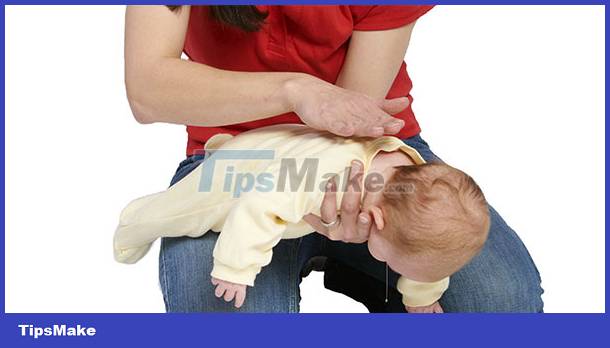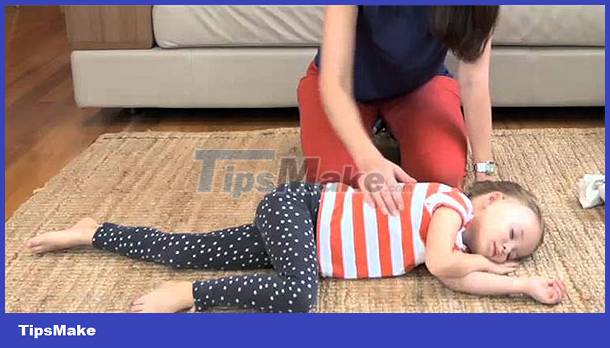First aid methods for children
Every year, more than one million children are hospitalized because of accidents in the home. While very few parents have knowledge about common first aid measures. These basic first aid measures at the beginning will help children a lot in saving their lives and treating them later.
 First aid methods for children
First aid methods for children
first
Choking
- Children may cough loudly or become silent because they cannot breathe. If obstructions do not clear when they cough, immediate action is required.
- Check for any objects inside, but only remove them when you are sure you can touch them without pushing them deep into your throat.
- Otherwise, with babies over 12 months old, lay them on their stomach on their lap, hitting 5 times between the shoulder blades with the palm of their hand.
- For older babies, lay him on his stomach on his arm, making sure his head and neck are firmly supported, and then hit the center of his shoulder.
- If that still doesn't work, turn the baby over, place the baby's head in the palm of your hand, and lower the baby down. Use 2 fingers to press firmly on the sternum. Do this for 3 seconds and look at the baby's mouth. If you see something, pick it up, if not, keep pressing.
- With children over 1 year old, stand behind them and place your fist between the navel and ribcage. Place your other hand on top of it and pull it back up. Do that 5 times.
- If the child still does not suffocate, call 911 while providing first aid.
2
Burn
- Cool the burned area with cold water for at least 10 minutes. It will reduce swelling. Take off your clothing, but if it gets on the burn leave it on.
- Cover the wound with food-grade nylon or a clean, hair-free cloth. However, if the burn is severe or larger than the hand, the child must be taken to the hospital.
3
Epistaxis
- Have the child sit down and tilt his or her head up so blood doesn't come out of the nose. Let them breathe through their mouths and cover their noses for 10 minutes. If the bleeding still doesn't stop, squeeze the nose back in 2 more times.
- When the bleeding stops, wipe the nose. Tell your child not to talk, cough or snort as it can burst a healed blood vessel in the nose and cause bleeding again.
Do not tilt the baby's head back completely because the blood can flow back into the throat causing discomfort. If the bleeding persists for more than 30 minutes, the child should be taken to the doctor.
4
Fall down
- If the child is unconscious, even for a short time, wrap the baby in a blanket to reduce shock, and then call 911.
- Place the baby in the recovery position if still breathing and there are no signs of broken bones or head and neck trauma. Look for skull fractures, such as unequal pupils, blood from the ears, or watery discharge from the nose.
- Check for scratches or irregularly shaped limbs. If you suspect a broken bone, stay put until an ambulance arrives. Wrap a towel around that spot.
- If the child is awake and shows no signs of serious problems, place a cloth soaked in cold water over the impact area for 10 minutes to reduce swelling.
- Monitor your child for at least 48 hours after the accident, and call your doctor if you notice anything out of the ordinary, such as dizziness, lightheadedness, or difficulty speaking.
5
Sprains
- You suspect your child has a sprain. Have the baby sit down first. Wrap some ice in a washcloth and apply it to the affected area for 10 minutes to reduce swelling.
- Dress the wound carefully. Keep the painful area elevated to reduce blood flow to the wound and reduce swelling.
6
Shockwave
- You must not touch the child if it is still in the power source, or you will also get an electric shock.
- Turn off the power immediately if possible. While you still have to be in contact with your child to get the power out, stand on dry insulating material, like a phone book, use something of insulating material, like a wooden broom or newspaper, and pull out the power supply.
- Or else, loop the rope around your baby's arm or ankle and pull it away from the power source.
- Check your baby's breathing. If your baby is unconscious but breathing, put him in the recovery position.
- An electric shock burn can be small but dangerous inside, call 911.
7
Poisoning
- If you believe your child has inhaled or swallowed a poison such as cleaning lice, medicine, or other harmful objects, call 911 immediately and keep the child quiet until the doctor arrives.
- If possible, find out what they have swallowed and take the container to the hospital. Don't make them vomit because it will only damage the stomach and pipes.
- If the child spontaneously vomits, bring it to the hospital for analysis.
- If your child swallows something that burns his or her throat, give them a sip of water or milk to cool the inside.
8
Sensitivity shock
- It can be a severe allergic reaction, usually from an insect sting or the ingestion of peanuts. It causes a drop in blood pressure, redness of the face and body, swelling of the face and nose, and difficulty breathing.
- First determine if the child has a known allergy and bring medication. Inject the medicine into the thigh or buttock.
- Then call an ambulance. Place the child in the recovery position, if the child cannot breathe and no medication is available, call 911 while administering first aid breathing.
9
Bleeding a lot
- If your child has a deep cut that bleeds a lot, wash it, then dry your hands and put on gloves.
- Elevate the wound so that the blood flows to the internal organs, instead of away. Check for anything attached to the wound. If so, leave it as is, as removing it will only make it worse.
- Instead, tie a cloth around the wound, lining the pad so that the cloth is higher than the object so as not to press it inward. Call 911 immediately.
- If nothing is attached to the wound, press the wound with a clean cloth to stop the bleeding and wrap it tightly around, but not so tightly that the blood can still reach the toes and hands.
- Depending on the severity, call 911.
ten
Fainting
- If the child is unconscious, call 911 immediately. In the meantime, follow these steps.
- Lift your baby's chin up with one hand while using your hand while pressing down on his forehead to tilt his head back. When the airway is open, listen to the breath.
- If there are no signs of breathing, use artificial respiration. Tilt your head back, lift your chin, and cover your nose. Take a deep breath, attach your mouth to the child's mouth, and blow air into the child's mouth for 1 second. Repeat no more than 5 times, checking to see if the baby's chest is inflated. If not, check your mouth for obstructions and make sure your head is still facing up.
- Place your finger on the child's breastbone. Press hard and fast at 100 times/min. After 30 breaths, give the baby breath again to bring oxygen to the lungs. After 2 breaths, give chest compressions again. Repeat the cycle until the breath returns.
11
Recovery pose
 Recovery pose
Recovery pose
- This position is for a child who is unconscious but still breathing. It helps them breathe easier and doesn't choke from vomiting. If head and neck injury is suspected, do not move.
- Lay baby on his side, bend one knee, and lower his head so he doesn't swallow any drool. Support your neck with a pillow.
- For infants, hold in your arms, support your head and face down to prevent choking.
5 ★ | 1 Vote
 Ways to help your child become a creative child
Ways to help your child become a creative child 20 simple ways to prevent cancer
20 simple ways to prevent cancer Things to know about sunscreen
Things to know about sunscreen How to beat alcohol with drinks
How to beat alcohol with drinks Causes of vitamin C loss in vegetables
Causes of vitamin C loss in vegetables Use Vitamins Correctly
Use Vitamins Correctly